December 30th 2019
Colonial Williamsburg

Traveler: Dave Bryant
Destination: Williamsburg, VA
A timber framing conference in Virginia Beach, VA allowed Dave Bryant to indulge in his love of traditional construction methods and visit Colonial Williamsburg to view centuries-old construction examples firsthand.
As a lover of traditional construction methods, I was excited to be able to attend a recent conference of the Timber Framers Guild of North America held in Virginia Beach, Virginia. The conference was held in a location that was a short drive from Colonial Williamsburg, so I was able to take a short trip to see some of that as well.
The conference is an annual gathering of individuals and companies that specialize in the construction and restoration of traditionally built, timber-framed buildings. Many of these structures are assembled with only hand tools and are connected with traditional joinery using only wooden pegs to hold the joinery together.
The conference began with a presentation by Patrick Moore, an instructor in the French method of joinery called steriotomy, where manual drafting techniques are used to create extremely complex roof systems.
Examples of student roof models:

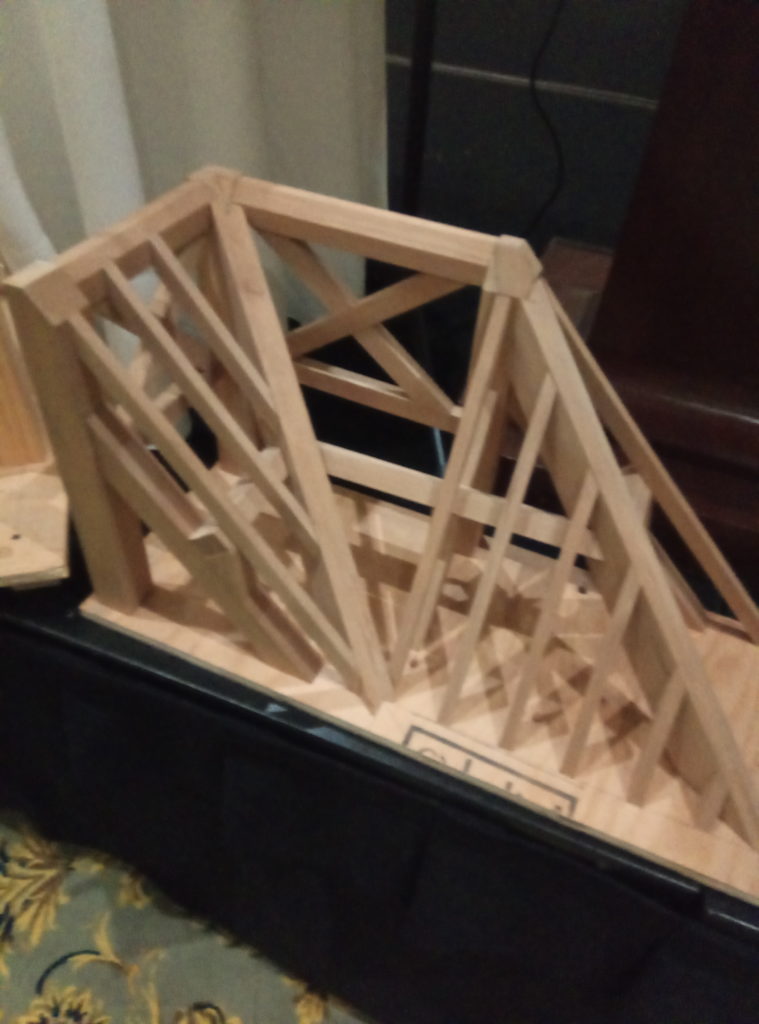
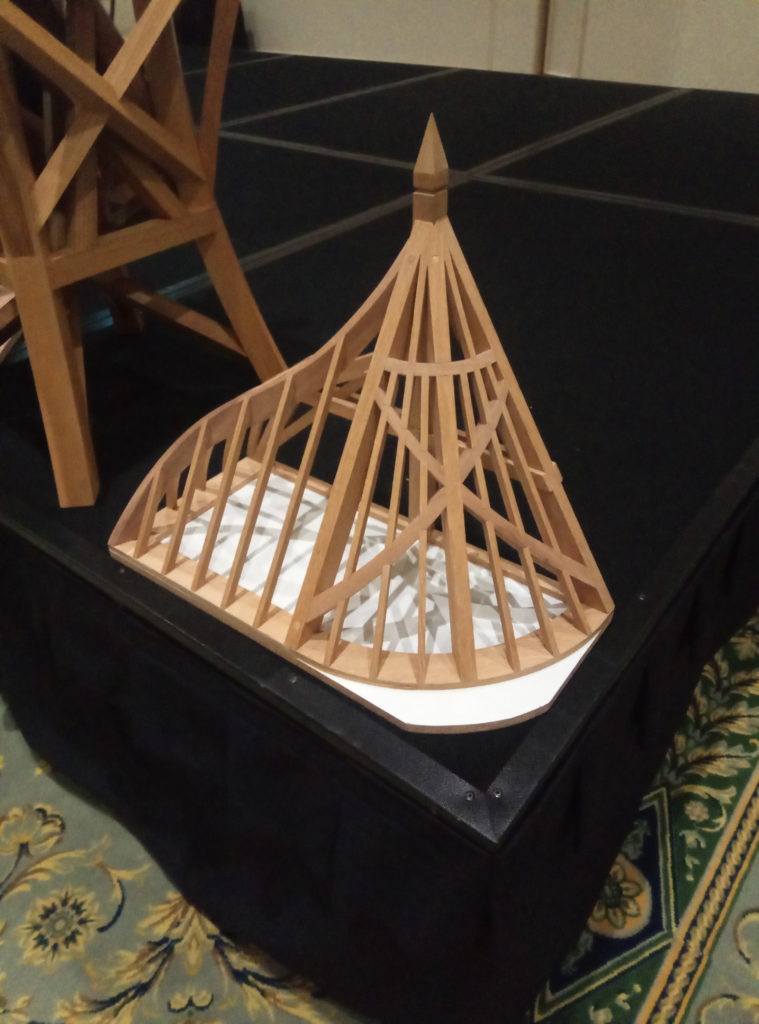
After that, there were many panel discussions, seminars, and demonstrations showing traditional techniques such as hewing and mortice and tenon joinery.
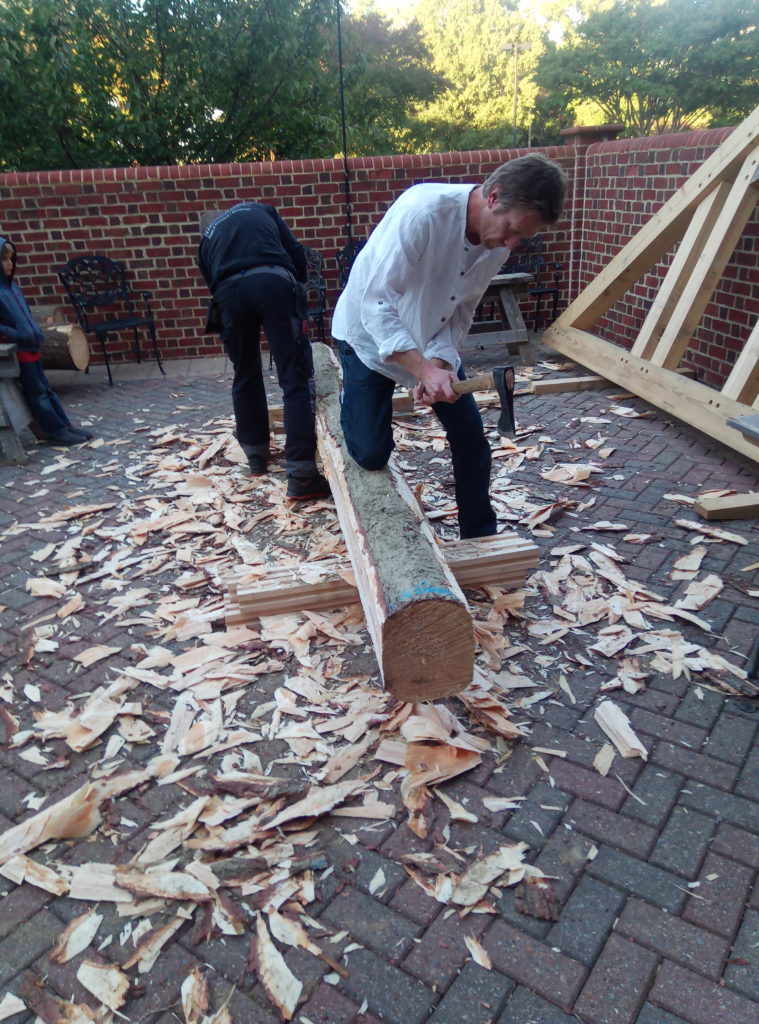
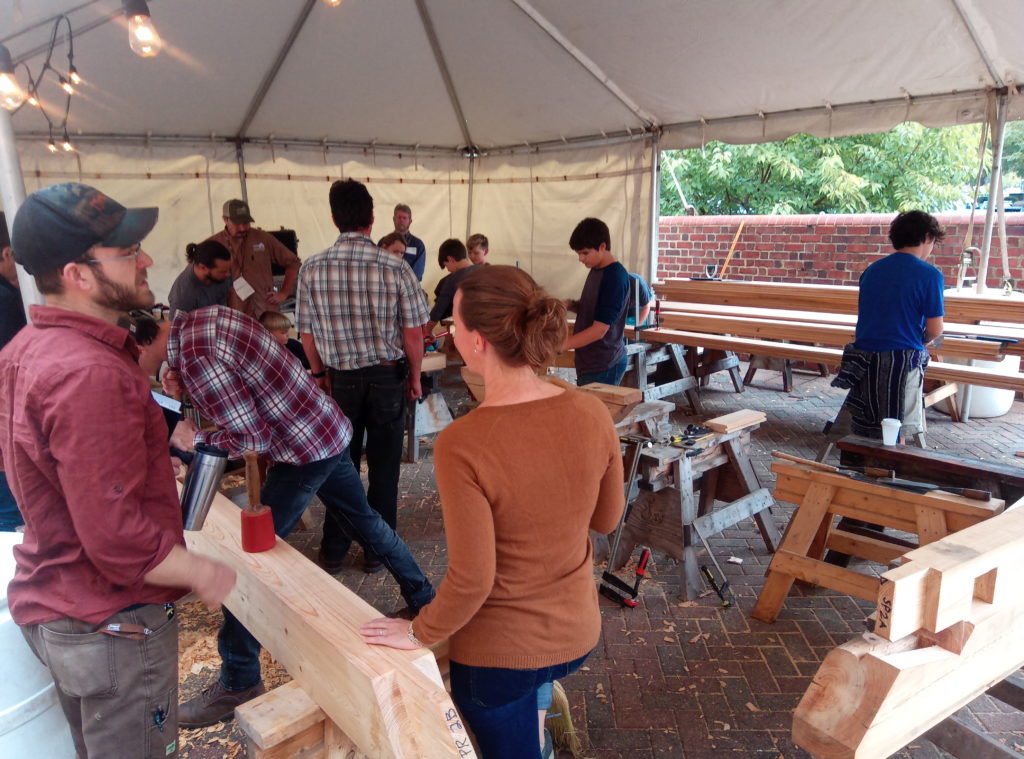
One seminar involved teaching the attendees’ children about the trade, a small timber truss was completed by the kids during the seminar.

During the conference, I was able to participate in a tour of Williamsburg that featured, naturally, some climbing around in attics to see the 18th-century construction methods employed in some of the buildings.
Bruton Parish Church:


Details of the Williamsburg Farmers Market timber roof showing the king post truss with principal purlins and common rafters typical of the period (below).
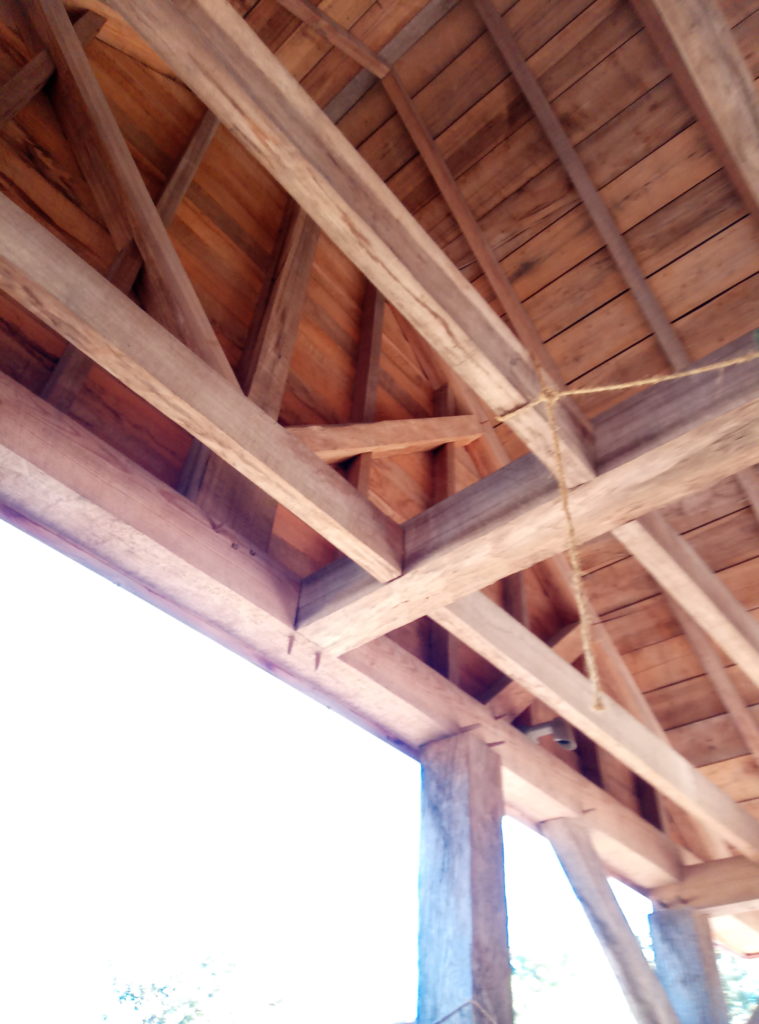
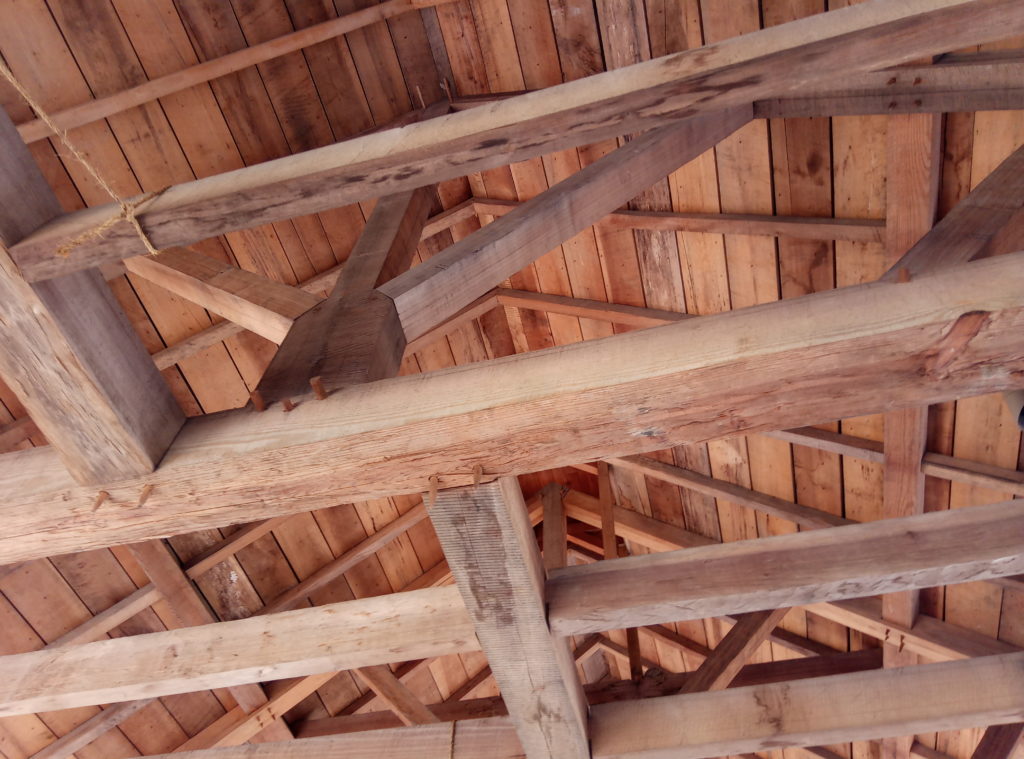
Simple but elegant cornice treatment (below, left) and an example of excellent stair joinery (below, right)
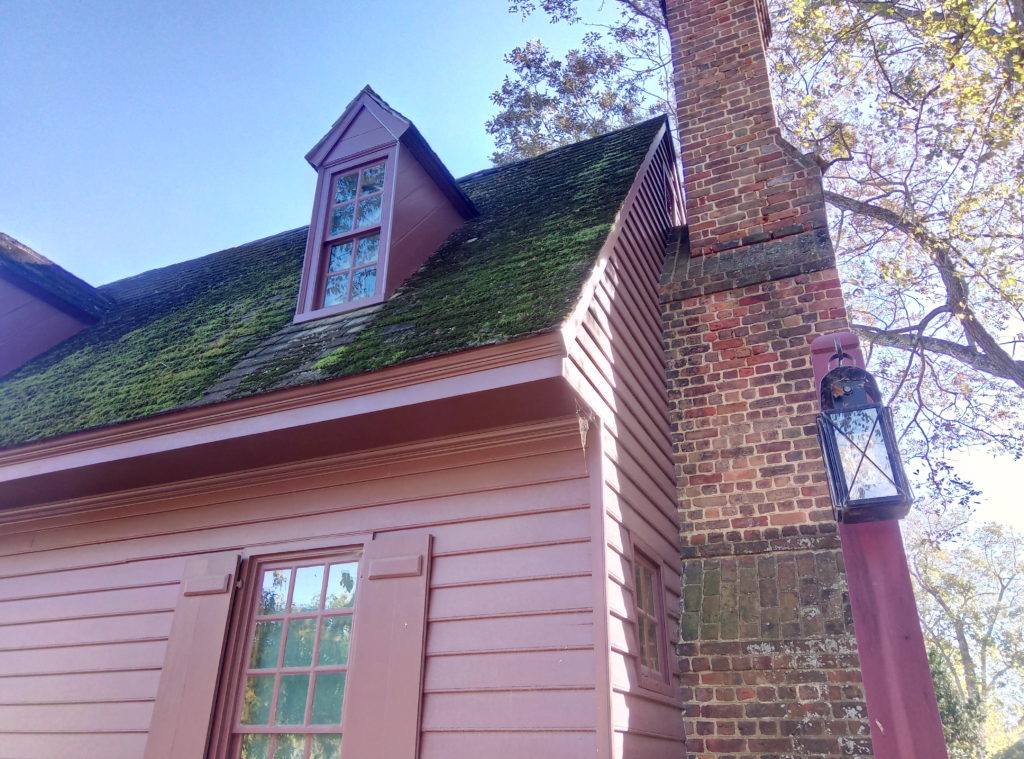
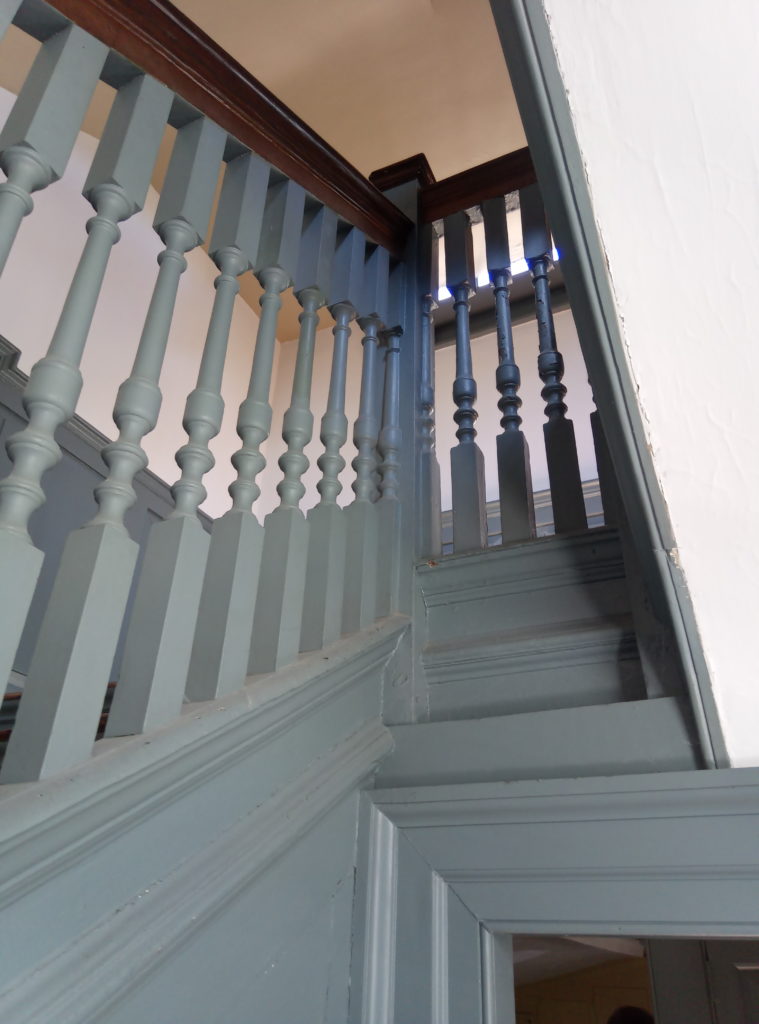
The Prentice store on the corner of Duke of Gloucester St. and Colonial St (below). One of the 88 original structures in the historic area, this building was painstakingly restored to its original glory after many alterations over the years.
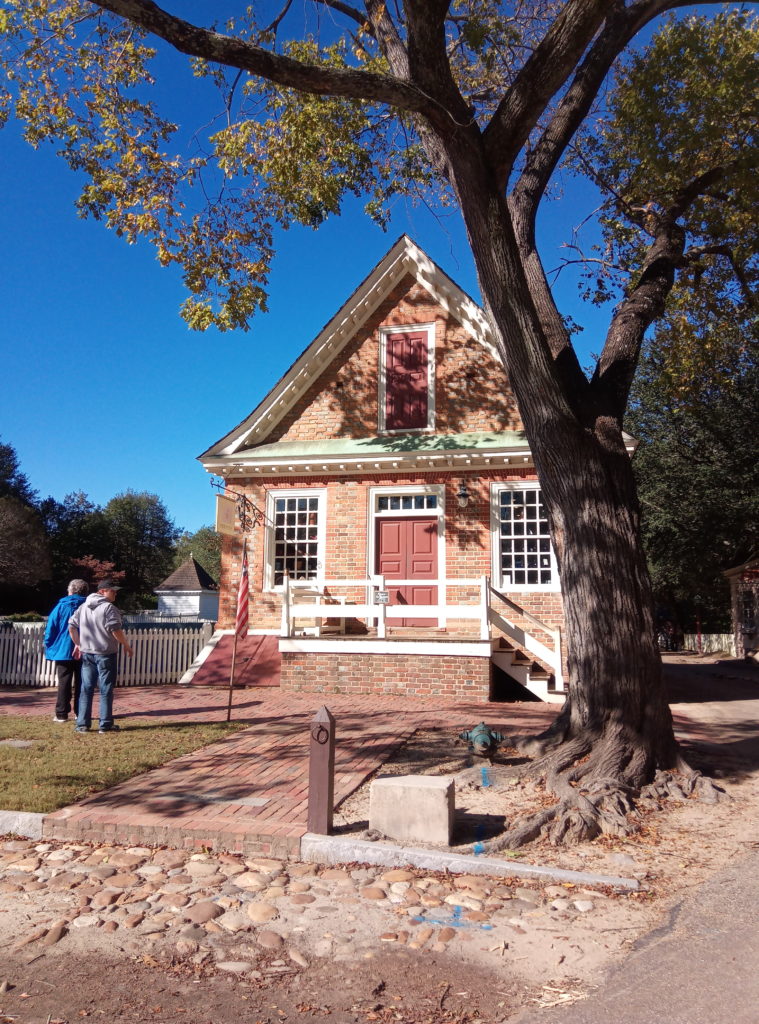
A beautiful example of "unplugged" joinery (below, left) and detail of the functional timber framing in the blacksmith's shop (below, right).
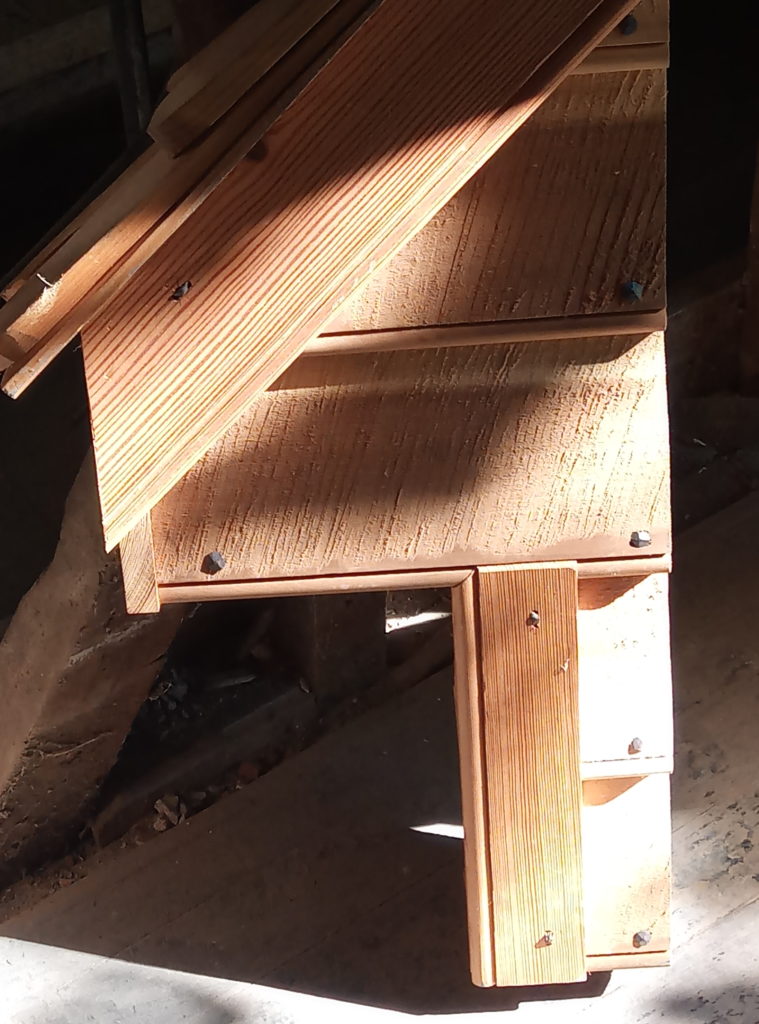
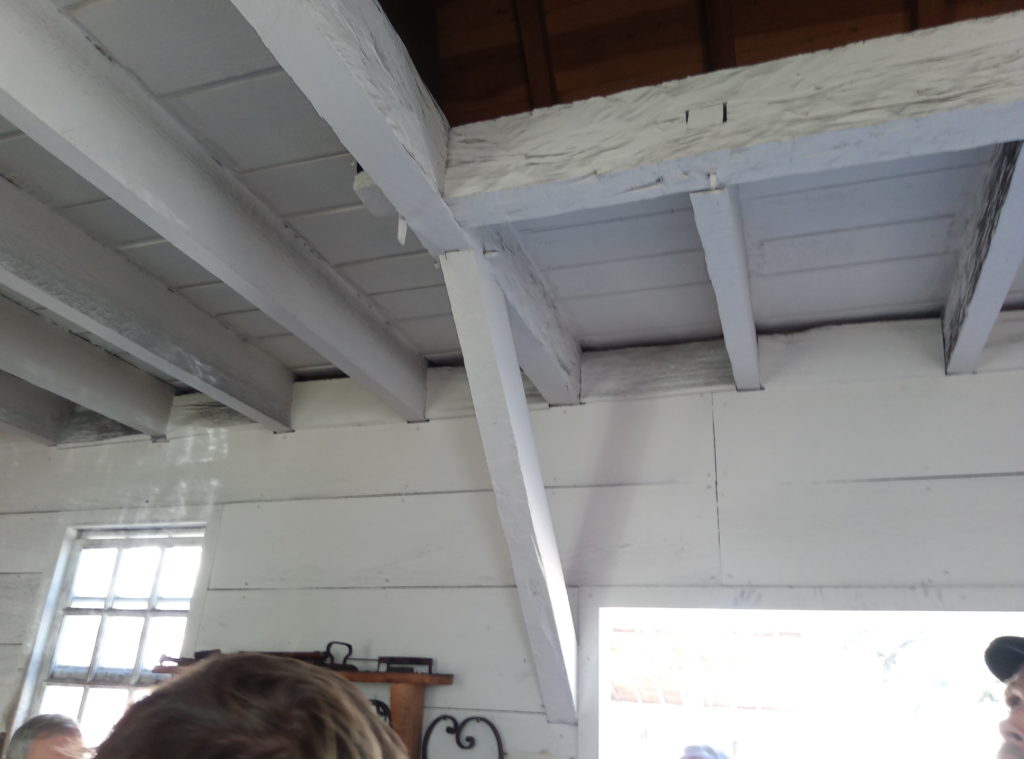
One of the many picturesque settings in the historic area:
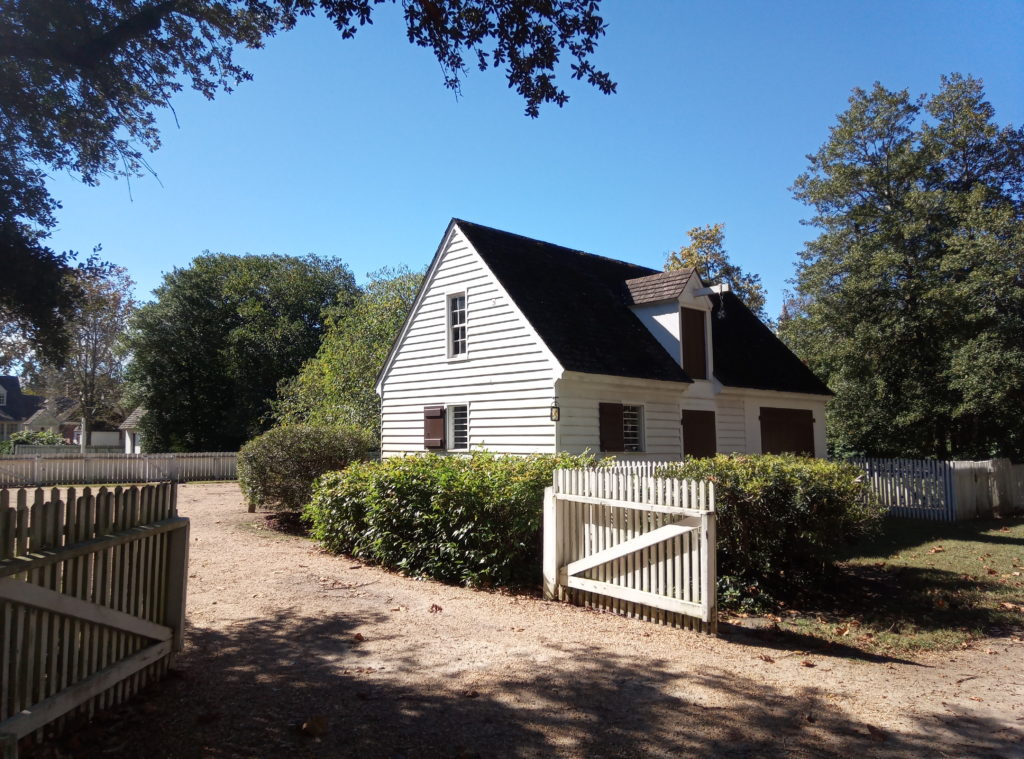
I have been studying pre-18th-century construction methods for 30 years and I never get tired of witnessing traditional work, whether it is historic or realistic reproduction. I find great inspiration in the craftsmanship and proportions in this level of work. Attending this conference and tour of the buildings of Williamsburg inspired me to encourage this type of craftsmanship in our designs.
